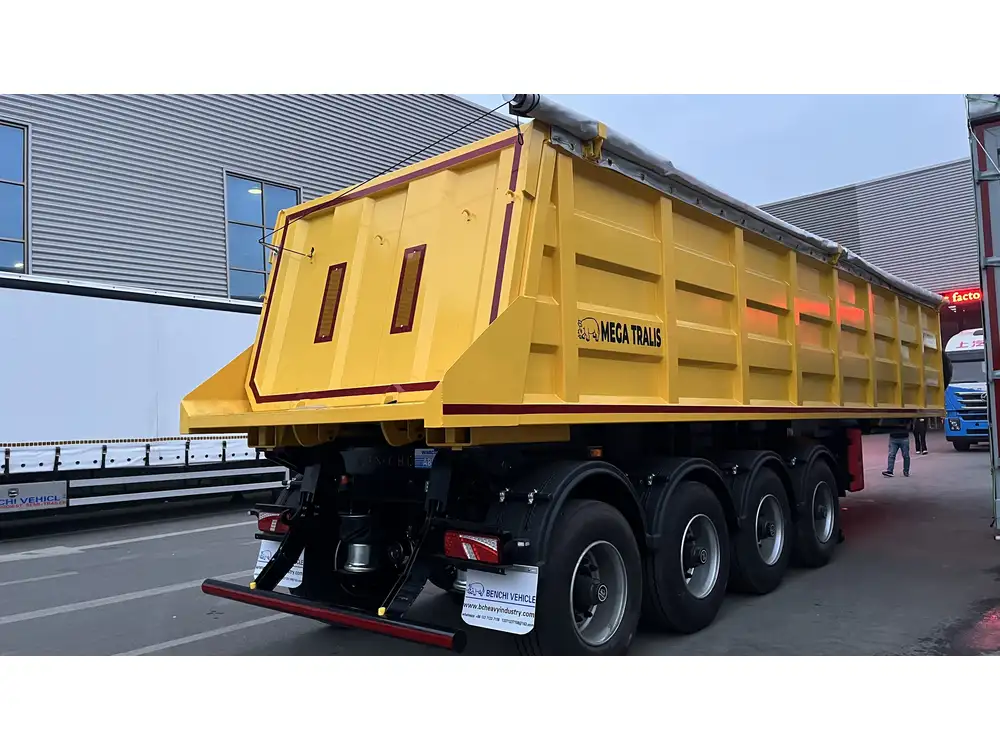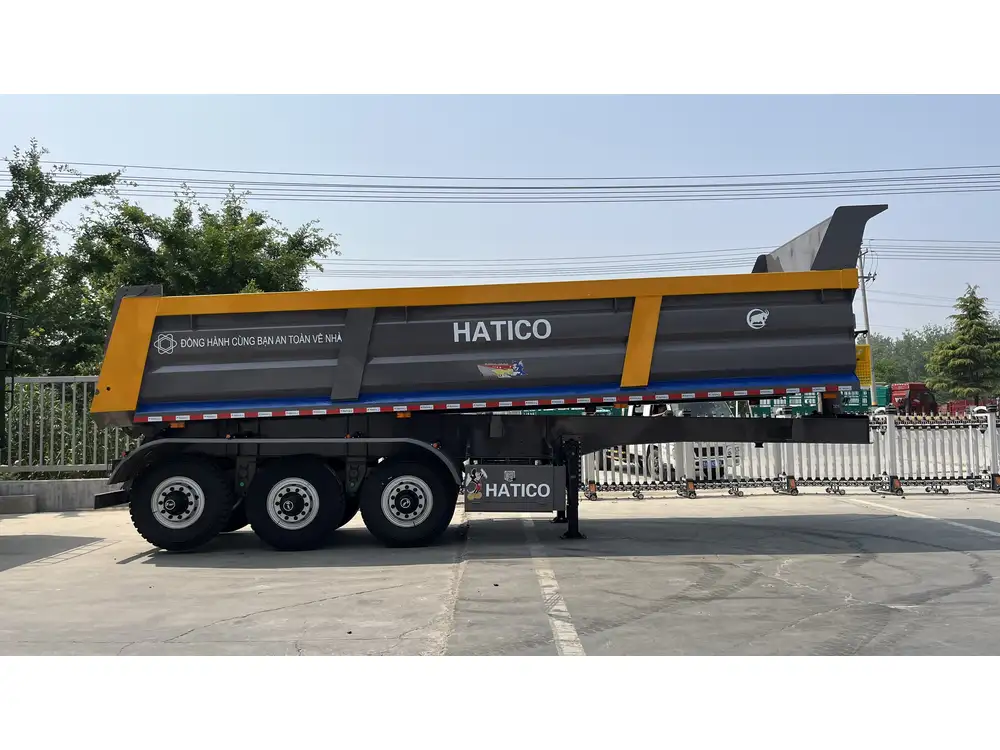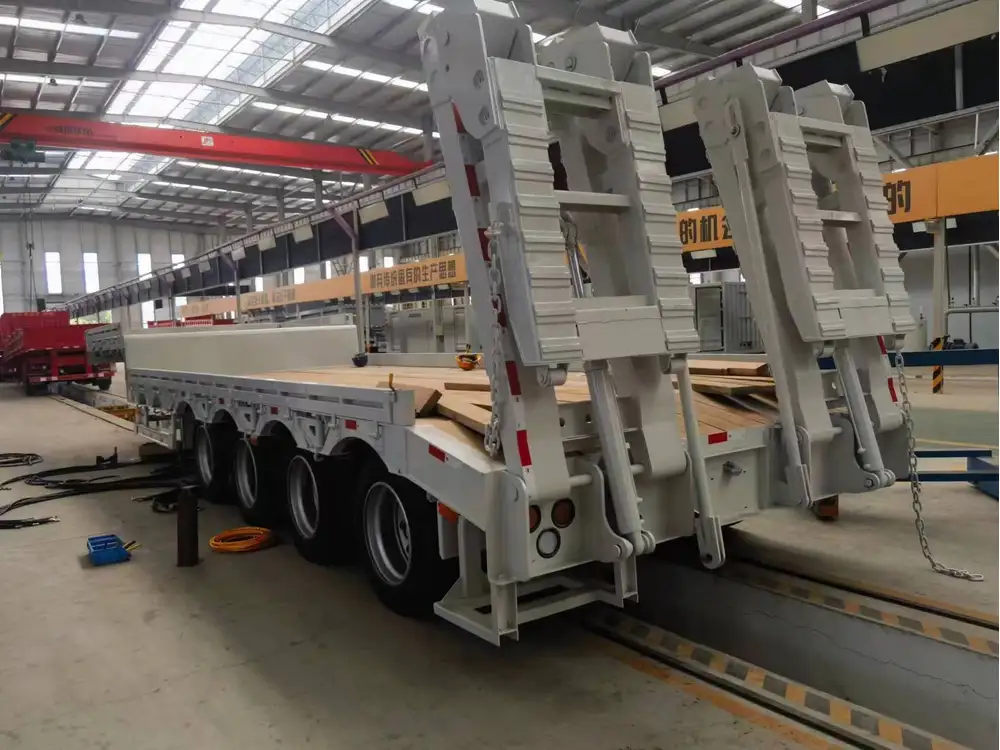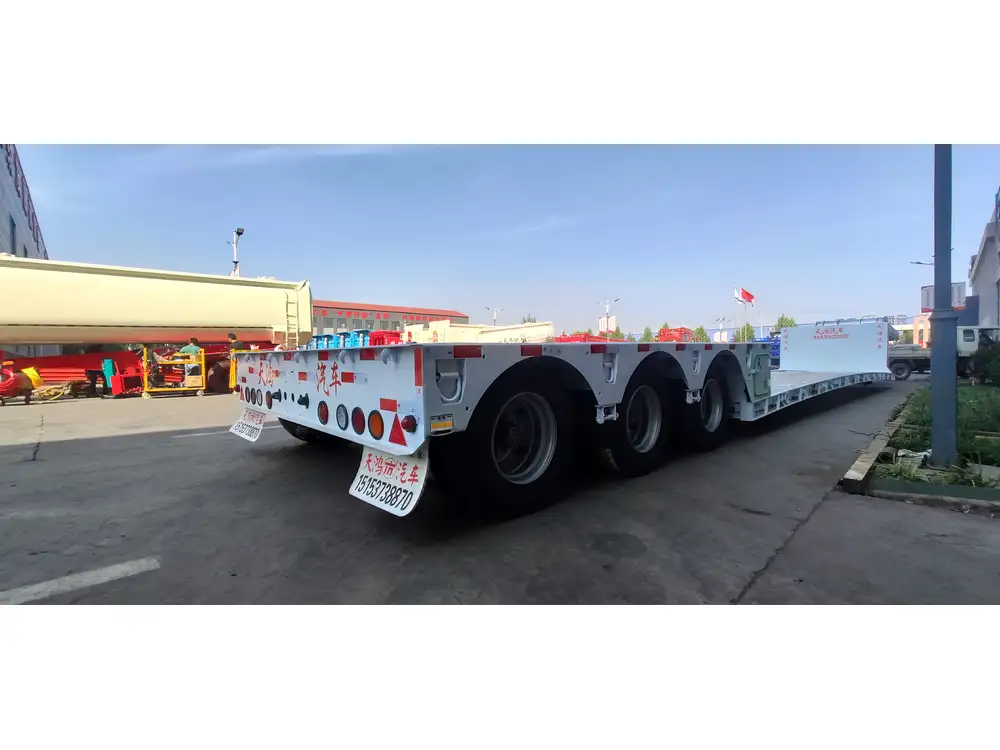Understanding the weight of an empty semi-trailer is critical for manufacturers, truck owners, and logistics experts alike. It has profound implications for payload capacity, compliance with regulations, and overall transportation efficiency. Whether you’re looking to optimize your fleet or reduce operational costs, knowing the intricacies of semi-trailer weight is fundamental to enhancing logistical operations.
What is a Semi-Trailer?
A semi-trailer is a trailer that does not have a front axle but relies on a hitch connected to a tractor unit to support a significant portion of its weight. Designed primarily for cargo transportation, semi-trailers come in various configurations to accommodate diverse freight types, including flatbeds, refrigerated units, and tankers.
Common Types of Semi-Trailers
| Type | Description | Average Empty Weight (lbs) |
|---|---|---|
| Flatbed | Open platform for transporting heavy or oversized loads | 4,000 – 5,600 |
| Box Trailer | Enclosed trailer ideal for dry cargo | 8,000 – 10,000 |
| Reefer Trailer | Temperature-controlled unit for perishable goods | 10,000 – 12,000 |
| Tank Trailer | Designed for transporting liquids | 8,000 – 12,000 |
| Drop Deck Trailer | Low-profile design for taller loads | 5,800 – 7,500 |
Understanding the specifications of different semi-trailer types is crucial, as it allows potential users to select the right model that balances weight capacity with operational efficiency.

Average Weight Specifications
An empty semi-trailer’s weight is not just a number; it is crucial for determining how much cargo can be legally and safely transported. The average weight of an empty semi-trailer varies by type, materials used, and the manufacturer.
Key Figures
- Standard Weight Range: The typical weight of an empty semi-trailer ranges between 5,000 to 12,000 pounds.
- Weight Distribution: The distribution of weight among the various components—including the trailer frame, axles, wheels, and tires—also impacts the overall performance.
To better illustrate, consider the following breakdown of average weights by trailer type:
| Trailer Type | Minimum Weight (lbs) | Maximum Weight (lbs) |
|---|---|---|
| Flatbed | 4,000 | 5,600 |
| Box Trailer | 8,000 | 10,000 |
| Reefer Trailer | 10,000 | 12,000 |
| Tank Trailer | 8,000 | 12,000 |
| Drop Deck Trailer | 5,800 | 7,500 |
Factors Influencing Weight
Materials: The construction materials significantly influence the empty weight. Aluminum trailers, while costlier, are lighter than steel counterparts, thereby allowing for more payload capacity.
Design Features: Innovative design elements aimed at maximizing strength while minimizing weight directly affect overall specifications.
Regulatory Requirements: Different states and countries have specific regulations that influence design and weight, thereby affecting manufacturers’ approaches.

The Impact of Weight on Payload Capacity
One of the most crucial aspects of an empty semi-trailer’s weight concern is its impact on payload capacity.
Key Considerations
Gross Vehicle Weight Rating (GVWR): This rating outlines the maximum total weight a vehicle can safely handle, including both the trailer and its cargo. Understanding this figure will help operators maintain safety and compliance.
Payload Calculations: Knowing the empty weight allows operators to ascertain the maximum load they can legally carry without exceeding the GVWR. For instance:
[ \text{Maximum Payload} = \text{GVWR} – \text{Empty Trailer Weight} ]Permits and Compliance: Overloading a semi-trailer can result in fines and increased insurance costs, not to mention higher risks of road accidents. Therefore, compliance is non-negotiable.
Why Accurate Weight Measurements Matter
Understanding how heavy an empty semi-trailer is directly influences operational effectiveness across several crucial dimensions.

Cost Efficiency
Fuel Consumption: Heavier trailers lead to greater fuel consumption. Thus, lighter trailers can diminish operating costs significantly.
Maintenance Costs: Like fuel, maintenance costs also escalate with heavier setups due to increased wear and tear on components.
Safety and Regulation Compliance
- Road Regulations: Many jurisdictions have strict weight limits for vehicles on public roads. A detailed understanding of trailer weight helps in adhering to these legal guidelines.
Route Planning
- Road Infrastructure: Certain routes may restrict heavy vehicles; knowing your trailer’s weight helps in strategic route planning, potentially avoiding fines or delays.

How to Measure Your Semi-Trailer’s Weight
Measuring the weight of your empty semi-trailer has never been easier, given the advancement in technology.
Methods for Accurate Weight Assessment
Weigh Stations: Utilizing public weigh stations is the most reliable method. Many state highways furnish official weigh stations that provide accurate scales.
Portable Scales: For convenience, investing in portable scales can allow for on-site weight assessments.
Incorporated Sensors: Modern technology allows for the integration of weight sensors in semi-trailer design. This offers real-time data analysis through connected applications.
Manufacturer Specifications: Reviewing the specifications provided by manufacturers can offer baseline weight measurements, although real-world conditions may lead to variation.
Maintenance Considerations Affecting Weight
Maintaining the integrity of a semi-trailer not only prolongs its lifespan but may also affect its weight—indirectly influencing its operational efficiency.

Regular Inspections
Chassis and Frame Integrity: Regular inspections of the chassis and frame ensure no heavy build-up (like rust) is impacting the trailer’s empty weight.
Axle and Suspension Maintenance: Both axle configuration and suspension systems can impact a semi-trailer’s ability to handle weight, especially when loaded.
Proper Loading Techniques
Understanding the importance of weight distribution during loading is vital. Improper weight distribution can lead to:
- Uneven tire wear
- Increased risk of trailer sway
- Potentially hazardous driving conditions
Tire Maintenance
Ensuring that tires are in good condition while also being the right size and type can optimize load-bearing capacity, thereby enhancing safety and extending operational lifespan.

Conclusion
For anyone involved in freight transportation, comprehending how much an empty semi-trailer weighs is more than just a curiosity; it is a pivotal aspect of operational planning and efficiency. The average weights might range significantly based on type and materials used, but the implications of those weights resonate throughout every aspect of logistical operation—from cost savings to regulatory compliance.
By understanding and accurately measuring trailer weight, companies can enhance their productivity, save on costs, and navigate the complexities of transportation regulations more effectively. In the competitive landscape of logistics, being informed is not just beneficial; it is essential.
As our industry continues to evolve, staying updated on advancements in trailer design, materials, and regulatory standards will ensure your trailer choices maximize capabilities while minimizing operational challenges. Thus, we encourage operators and manufacturers alike to invest in thorough knowledge and practical understanding of the semi-trailer spectrum.



